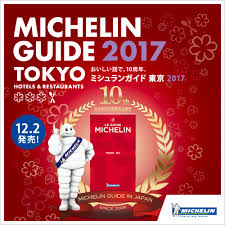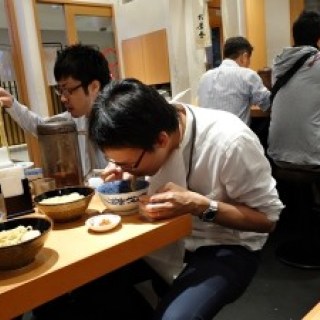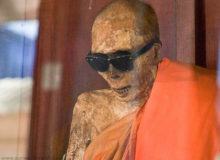As the famous chef Paul Prudhomme once so rightly stated, “you don’t need a silver fork to eat good food”. Unfortunately, while good old Paul told us what we did not need to eat good food, he failed to tell us what we did need to eat good food. And so it may come as a bit of a surprise to many of you to learn that all you really need to eat good food is an appetite for adventure, a valid passport and a plane ticket to Tokyo Japan. Yes my friends, there is good food in Tokyo.

By Jamil Abdur-Rahman, M.D.
Did you know that the city of Tokyo has more “Michelin Star” restaurants than New York City? Did you also know that the city of Tokyo has more “Michelin Star” restaurants than do the reputed “Culinary Meccas” of London and Paris combined? That’s right folks, Tokyo Japan. If you are like I once was, the phrase “fine dining” probably doesn’t conjure up images of Tokyo. But after reading this, I hope that the phrase “fine dining” will conjure up images of good food in Tokyo and French car tires.
Before we cross the Pacific to explore Tokyo’s fine dining scene, lets take a brief detour through space and time; cross the Atlantic and drop in on early 20th century France. After all, it was there in 1926 that the French tire company Michelin began sending anonymous restaurant reviewers out to critique French restaurants. Michelin then published their reviews in guidebooks that were circulated nationally. The goal of the guidebooks was to encourage French readers to get out and about, to experience their country and to take more road trips. After all Michelin concluded, the more road trips people took, the more tires they needed to buy. And with this, the now world famous Michelin restaurant review was born. Today, Michelin has a full-time staff of anonymous restaurant reviewers who travel the world. A favorable review from the tire company can literally elevate an eatery to rock star status over night, while an unfavorable review from the tire company can relegate a restaurant to the dustbin of history.

2017 Tokyo Michelin Guide
When a restaurant is named a “Michelin Star”, that means that it is considered to be among the best of the best restaurants in its category. And once named a “Michelin Star”, a restaurant can then be awarded anywhere from 1 to 3 stars. A 1-Star restaurant is an establishment with “very good cooking in its category” that is worth stopping to sample while on a road trip. A 2-Star restaurant is an establishment with “excellent cooking in its category” that is worth making a detour from your road trip to sample. And then a 3-Star restaurant is an establishment that has “exceptional cuisine in its category”. Cuisine that is worth making a “special trip” for. A special trip to a place like….oh I don’t know, maybe Tokyo Japan?
Recently, a total of 13 restaurants in Tokyo were awarded with three Michelin stars. This means that, using the French tire company’s criteria, there are 13 restaurants in Tokyo that have “exceptional cuisine” that is note worthy enough that it justifies making a “special trip” to Tokyo to sample it. With the rise of niche travel sectors like “culinary tourism” or “food tourism”, more and more people are seeking out unique and memorable travel experiences through the pursuit of good food and drink. So, knowing what we now know about Tokyo’s culinary scene, it should come as no surprise that many of these “culinary tourists” are seeking out these unique and memorable travel experiences in Tokyo. Recent statistics released by the Japan Tourism Organization in fact reveal that 60% of international visitors to Japan cited the country’s “culinary appeal” as being the primary reason for their visit.
The 12 Tokyo restaurants that have been award 3 Michelin Stars for the year of 2017 are Ishikawa, Kanda, Quintessence, Kohaku, Saito, Joel Robuchon, Sukiyabashi Jiro Honten, Makimura, Yamadaya, Yukimura, Yoshitake and Ryugin. 10 of these 12 (Joel Robuchon and Quintessence being the 2 exceptions) feature traditional Japanese cuisine including sushi and the deadly Fugu pufferfish. One of the many things that is really cool about making a “special trip” to Tokyo to sample the traditional Japanese fare on offer at these 11 restaurants is the fact that Japanese food not only tastes good, but many times it is also good for you. So with meals that feature lots of steamed vegetables, rice and fish, you can voraciously indulge your adventurous pallet and not feel too guilty about all of the food that you’ve eaten when you return home. Plus, how many opportunities in life will you have to eat food that has been officially designated by the United Nations as being an intangible part of a country’s cultural heritage? That’s right people, the United Nations is down with Japanese food and you should be too. According to the U.N., traditional Japanese food, known as Washoku, and the skills, knowledge, practices and traditions related to it’s production, processing, preparation and consumption all constitute an intangible part of Japan’s cultural heritage. Basically, according to the U.N., Japan and it’s food are inextricably linked. For this reason, Washoku was placed on the UNESCO list of Intangible Cultural Heritage.
So when you go to Tokyo, do not miss out on the unique opportunity to celebrate a city and a culture that is steeped in history and tradition by celebrating that city and that culture’s food. But remember, as is the case with any place that has a rich and storied past, there is a right way of doing things and there is a wrong way of doing things. So when eating out in Tokyo keep these few pointers in mind;
1. When eating noodles in public, slurp like there is no tomorrow. Slurping is thought to enhance the flavor of the noodles and it is considered to be a sign that you are enjoying your meal.
2. Never use your hand(s) to catch falling food. If a morsel of food is falling, let it fall.
3. Never use your teeth to bite your food into smaller pieces that you then place back on your plate.
4. Never rest your chopsticks across your plate or bowl. Instead, rest your chopsticks on your “chopstick rest”.
5. Never raise your food above the level of your mouth.
6. When eating noodles or soup, sip (or slurp) directly out of the bowl instead of using a spoon.
7. Never mix wasabi into your soy sauce.
8. Never pour a drink for yourself without pouring one for others as well.
9. Always clean your plate. Leaving food is considered to be rude.
10. No need to tip. Japan is a no tipping country (Cheap skates rejoice!!)
Until the next friends remember, you really do not need a silver fork to eat good food. But an appetite for adventure, a valid passport, a plane ticket to Tokyo and a pair of chop sticks just might come in handy. Sayōnara (さようなら)

 June 17, 2017
June 17, 2017







 May 19, 2018
May 19, 2018 





